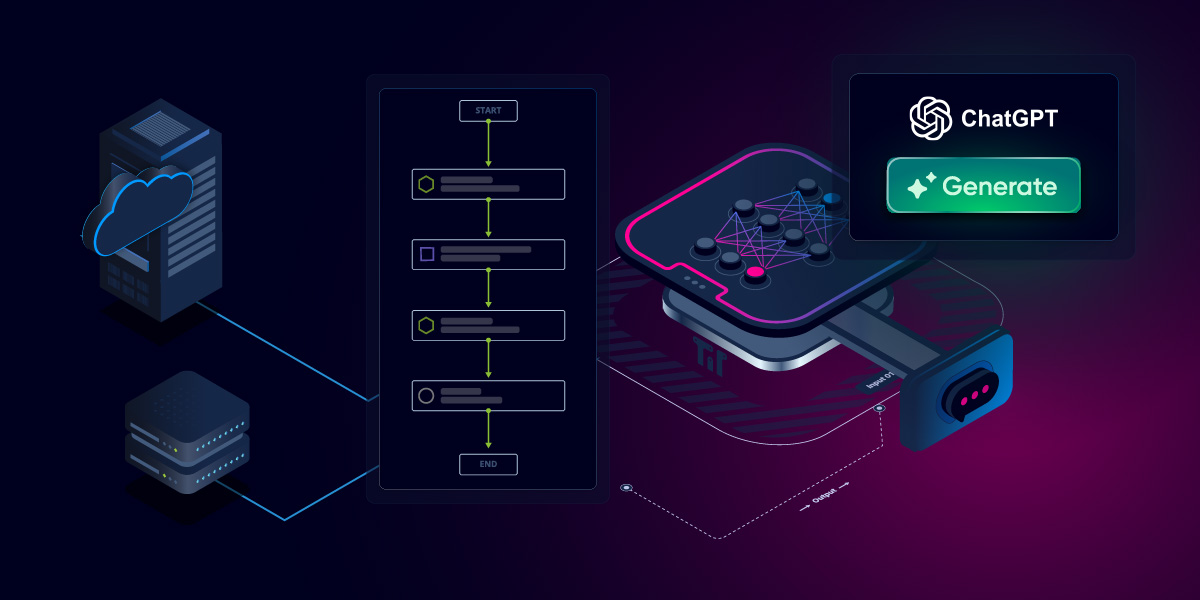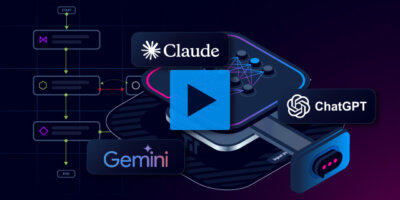If you’ve ever asked GPT to write a network config, you know it’s both impressive and incomplete.
Yes, it can spit out a decent CLI command.
But does it know your environment?
Can it validate a change?
Can it tell you if that config actually fixed the issue?
These aren’t just technical questions — they’re governance questions.
What are the risks of this change? Does it meet policy? How does it align with your existing standards? In network operations, risk isn’t theoretical.
We’ve all seen the exciting potential of AI in many different areas — generating pictures, writing social media posts and articles, etc. But for these popular use cases, risk doesn’t mean much. You generate the wrong image, you don’t like the sentence structure, whatever it is, you just try again.
Imagine the same risk in the network, however. Let an AI agent make changes on a bank’s network, a healthcare system, anything — and one wrong move can bring critical operations grinding to a halt.
That’s why plugging AI into your network without guardrails is a nonstarter. And that’s where orchestration comes in.
At Itential, we’ve been exploring how to operationalize large language models like GPT as part of real infrastructure workflows — not as a magic solution, but as a valuable agent in a responsible, governed, future-ready automation strategy.
In our recent demo on AI-driven remediation, we showed what happens when you put GPT to work in context, as part of an orchestrated flow. You can watch the demo below — keep reading for key takeaways.
ChatGPT Is a Great First Responder — But It Needs Boundaries
When you’re building out agentic AI-driven orchestration, clearly defined roles and responsibilities are crucial. In the demo, we integrated GPT as our AI troubleshooting agent. Its job:
- Analyze an incident
- Summarize the issue
- Assess severity
- Propose a remediation plan
- Generate both CLI commands and API payloads
It handled that surprisingly well. But context matters. Without the right context, GPT doesn’t know your systems, your topology, your change policies or organizational standards. Without guardrails, GPT can hallucinate config changes or miss crucial context.
That’s why orchestration matters — Itential passes GPT only the relevant incident data, and parses its response to kick off structured pre-checks before any change is made.
Think of GPT as the one who suggests what to do — not the one who actually does it.
LLMs Are Not Your Risk Control
Let’s be clear: you should never push changes to production based solely on a language model’s suggestion.
So after GPT creates a remediation plan, we routed it to another AI agent: Gemini, our risk validation agent.
Gemini’s responsibilities:
- Is this change compliant with policy?
- Does it introduce security risk?
- Could it disrupt adjacent services?
Only if the proposed action passes this check does the orchestration move forward. In mission-critical domains like networking, trust requires more than good output. It requires a validation layer with clear roles, responsibilities, and accountability.
This multi-agent approach means GPT can move fast, while Gemini ensures it doesn’t break anything along the way.
If You Want to Improve, You Need a Feedback Loop
Most AI tools help you react faster. Few help you get better over time.
That’s why we introduced Claude, our AI root cause analysis agent, to close the loop.
Claude reviews historical patterns, identifies recurring problems, and suggests long-term fixes.
Claude isn’t part of the “fix it now” moment — it’s the agent that prevents future 2 AM alerts.
And because Itential orchestrates this whole flow, every decision, validation, and action is fully documented and traceable in platforms like ServiceNow.
So… What Happens When You Plug ChatGPT Into Your Network?
If you do it without orchestration: You get a generative AI assistant with no context, no memory, and no accountability.
What you can build with Itential is more than just throwing an AI system into your network. It’s agentic orchestration: coordinating multiple specialized agents in a governed, policy-aware flow. In our demo:
- GPT analyzes.
- Gemini validates.
- Claude learns.
- Orchestration connects them all.
Each agent plays a defined role, and each decision is traceable to ensure accountability. In a real-world context, you might have many more agents, or you might just use one or two. It depends on the risk analysis, resources and time you can dedicate, and how critical the use case is.
That’s how AI becomes part of a self-healing network. Not with unchecked automation, but with orchestrated control across tools, teams, and systems.
Think of it like a body’s immune system:
Recognize the issue → assess context → use the right tools → solve without side effects.
That level of autonomy isn’t a dream. It’s here — if you have the orchestration platform to support it.
AI Is Not the Answer — It’s an Agent
At Itential, we don’t believe AI replaces your workflows — it accelerates them.
The key is treating it as an agent with defined responsibilities, not a catch-all solution. At Itential, we help teams operationalize AI responsibly — with orchestration that enables scale, context, and control.
And context is truly the difference maker here. The difference between coordinating between multiple function calls through API endpoints and coordinating across multiple LLMs is that extra level of context — providing the right information allows an LLM to interpret sets of capabilities rather than going function by function. That’s how you can build out agents that can be trusted to validate changes, assess recommendations, and take action in your network.
When you can coordinate multiple specialized AI agents across a unified platform to act with context, validate against policy, and continuously learn from every interaction — that’s when you can achieve the transformative benefits of agentic orchestration.
That’s how you go from experimenting with AI to operationalizing it at scale.
Watch the full demo here to see it in action.
And if you’re thinking about how to start operationalizing AI in your own environment, we’re happy to talk. It starts with orchestration — and Itential makes that possible.




